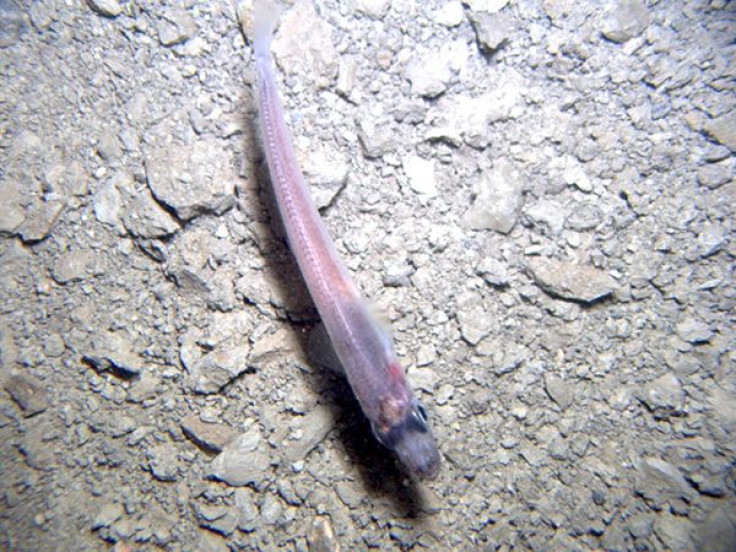Dark Underworld Of Mysterious Sea Life Revealed By First-Ever Antarctic Ice Sheet Drilling

If biology has proven anything, it’s that life can thrive in the most unlikely of places, even in the cold, dark underbelly of a glacier. Researchers drilling in Antarctica expected to find a wasteland underneath a half mile of ice, but were surprised to encounter an environment teeming with fish and amphipods. The animals thrived in total darkness hundreds of miles from the open ocean.
For the first time, scientists with the Whillans Ice Stream Subglacial Access Research Drilling, or WISSARD, bored through 2,500 feet (740 meters) of the Ross Ice Shelf to reach the so-called grounding zone -- the boundary between the land and sea. The Ross Ice Shelf is the largest chunk of floating ice in the world. The drills were carried out earlier this month roughly 530 miles inland from where the ice meets the open ocean. The researchers’ findings were announced Wednesday.

"I have been investigating these types of environments for much of my career, and although I knew it would be difficult, I had been wanting to access this system for years because of its scientific importance," Ross Powell, lead researcher on the project from Northern Illinois University, said in a statement. "Findings such as these -- gaining an understanding of the ice sheet dynamics and its interaction with ocean and sediment, as well as establishing the structure of its ecosystem -- are especially rewarding.”
To puncture the ice, scientists used a state-of-the-art hot-water drill, which shoots pressurized water from the end of a 3,168-foot-long hose directly into the ice sheet. They then deployed a submersible camera into the hole to get a glimpse of what was at the other end.
The space between the bottom of the ice and the seafloor is only about 33 feet, according to Discovery. Water temperature was just 28 degrees Fahrenheit.
The entire process – from conception to final drill – took about six years and was sponsored by the National Science Foundation. “I’ve worked in this area for my whole career,” Powell told Scientific American. “You get the picture of these areas having very little food, being desolate, not supporting much life.”
Amphipods are related to shrimp and are known to survive in earth’s harshest environments. Scientists discovered three different kinds of fish living under the ice.
This wasn’t the first surprise Antarctic encounter in recent years. In January 2014, scientists identified a new species of sea anemone suspended upside down from the roof of sea ice in Antarctica’s Ross Sea. The new anemone was named Edwardsiella andrillae and had an opaque-white body with thin tentacles.
© Copyright IBTimes 2024. All rights reserved.












